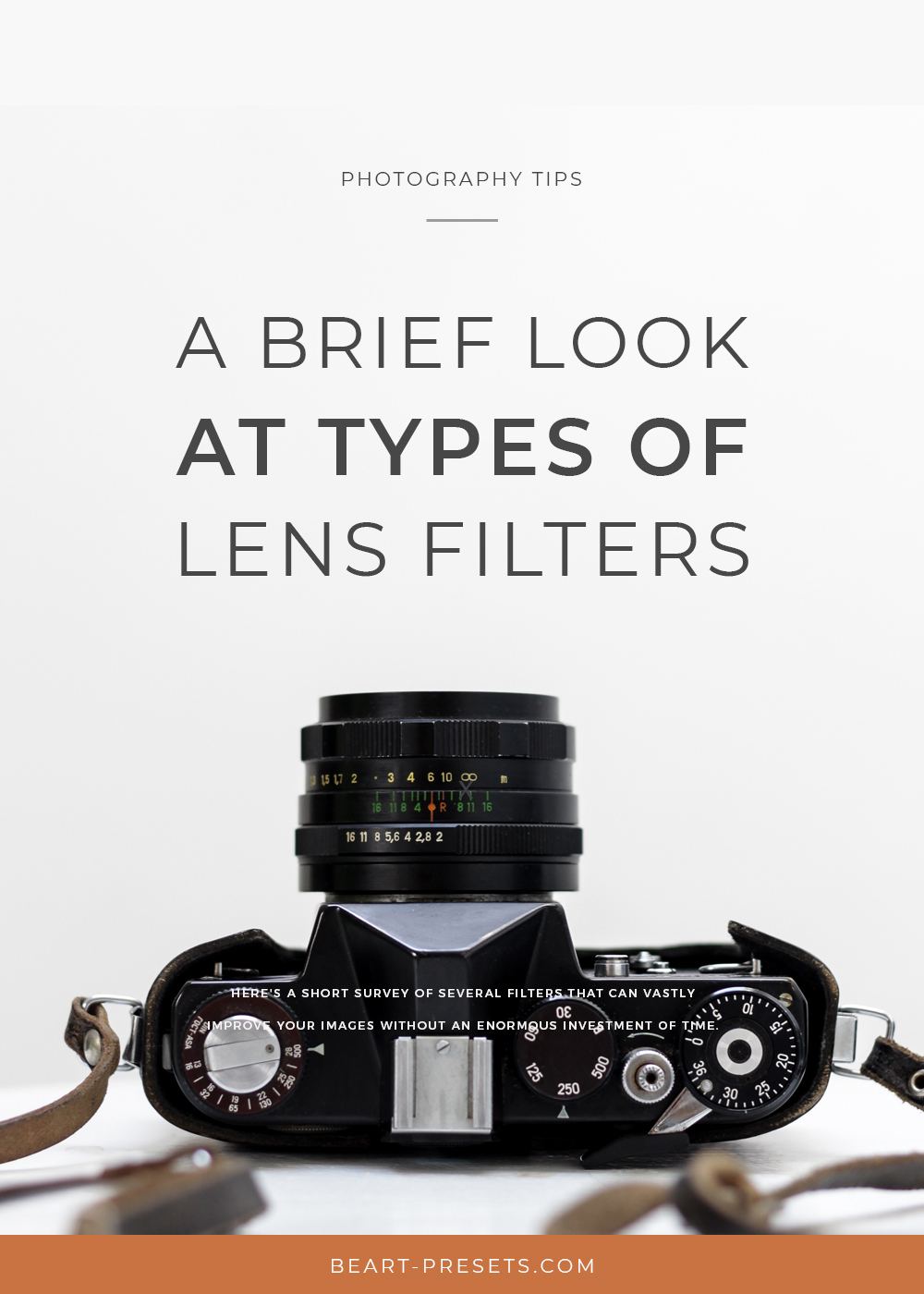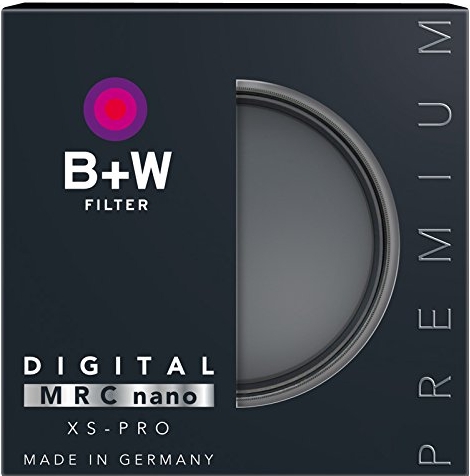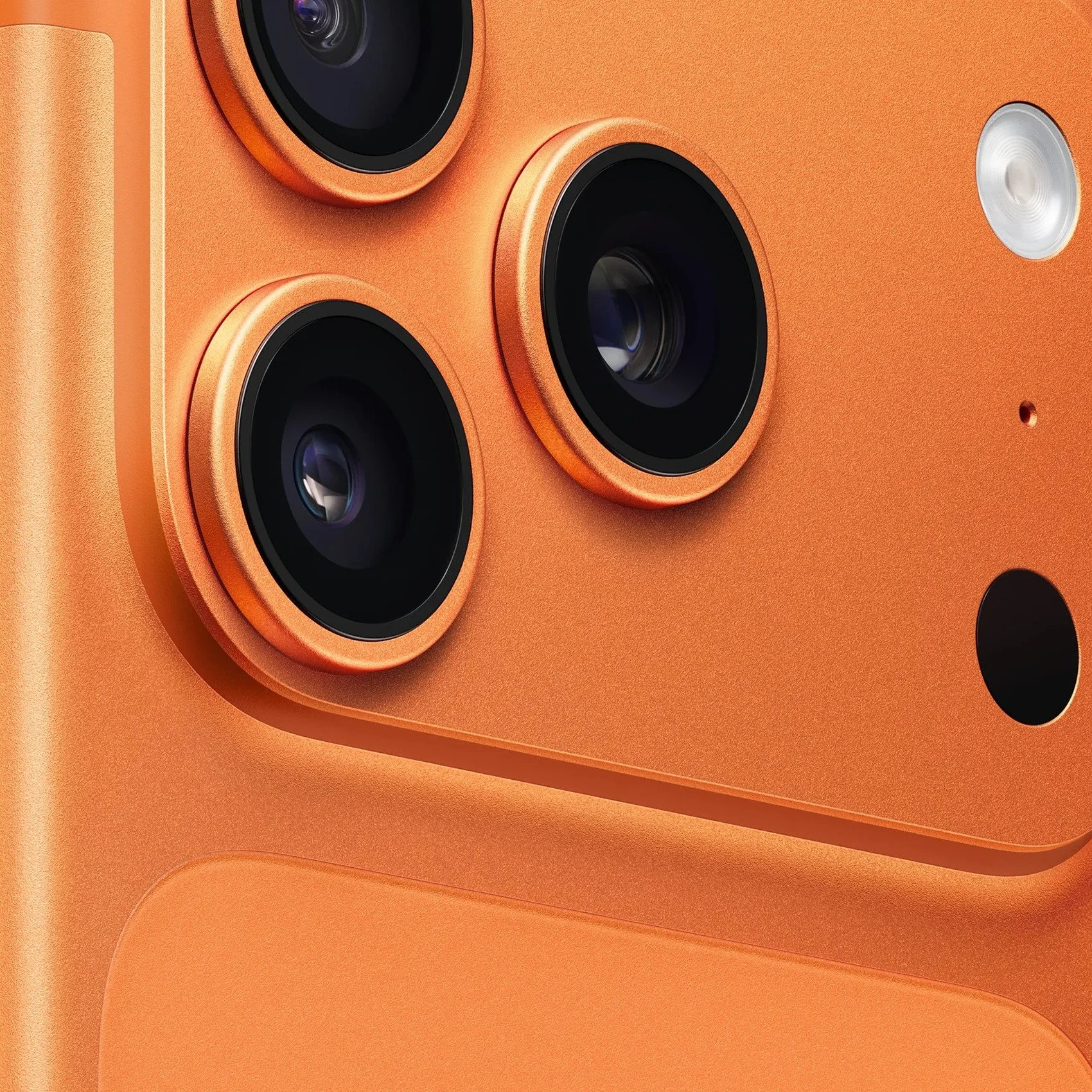A Brief Look at Types of Lens Filters
Having presets at your beck and call doesn't mean you can't (or shouldn't) use filters out in the field. We believe that whenever possible, you should use filters to improve your photography, or better manipulate it to achieve your desired results, out in the field.
Then, you can use your post-production editing time to make smaller edits with our without presets rather than spending the time trying to alter your images radically.
Here's a short survey of several filters that can vastly improve your images without an enormous investment of time.
Polarizing Filter
If you could only use one filter, there's no doubt that it would be the ever-versatile polarizing filter. It's a four-in-one tool no photographer should ever be without. Its primary job is to reduce glare on glass and water; minimize all surface reflections.
It also can increase saturation which means deepening the color of the sky - making it extremely handy with landscape photography. However, it's so versatile that its uses go well beyond landscape photography - especially on a bright, sunny day. Much of what a polarizing filter does can be difficult to duplicate in post-production editing.
To use, simply attach to your lens and rotate to achieve your desired effect. It can be used in combination with ND grads and filters.
ND Grads (neutral density graduated filters)
These light-reducing coated filters can help you avoid those washed out skies you often get in photography, especially on bright days. These are typically drop-in filters which you can rotate making it easier and faster to adjust its horizontal position to match the sky and ground. They're available in light-reducing densities of 1, 2, 3, and 4 stops.
That graduation is available as soft, medium, or hard:
Soft ND: These can be used alone or combined with a medium ND, and they are best for mountainous landscapes where you want to capture more of the sky elements.
Medium ND: For a detailed landscape with a lot of elements such as boulders, hills, or foliage bordering the sky, a medium ND can be useful.
It offers from full to no effect making it the more popular of the three ranges of ND grads.
Hard ND: These are designed for those images where you want a seamless blend between sky and ground using this very short graduation from no effect to full effect.
Reverse ND:
When the upper part of your horizon is your brightest part of the frame, a reverse ND is a good option. It has a hard graduation from the center down, while moving up from center it's a softer graduation.
Neutral ND:
These reduce the amount of light entering the lens which means you can shoot at slower shutter speeds or even wider apertures.
However, as neutral filters, they typically won't add anything to the saturation or color of your image. The more expensive, higher quality neutral filters can affect color casts. Neutral ND’s come in densities of 1, 2, 3, and 4 stops.
Screw-in or Drop-in?
Filters come either as screw-in or drop-in. The screw-in ones you simply screw onto the front of a lens. They're typically small, lightweight and less expensive than the drop-in filters.
The most obvious disadvantage with screw-in is that they need to be the right thread size for each lens which means you can end up needing to purchase several of the same filter in various sizes.
Drop-in filters drop into a holder at the front of lenses via an adapter ring. Rather than various sizes of the same filter, you just need the appropriate size adapter ring for each lens.
The clear advantage is that you will only need one set of filters for all your lenses. Keep in mind that some filters (such as ND grads) perform much better as drop-ins. Drop-ins are typically more expensive than screw-in.


















